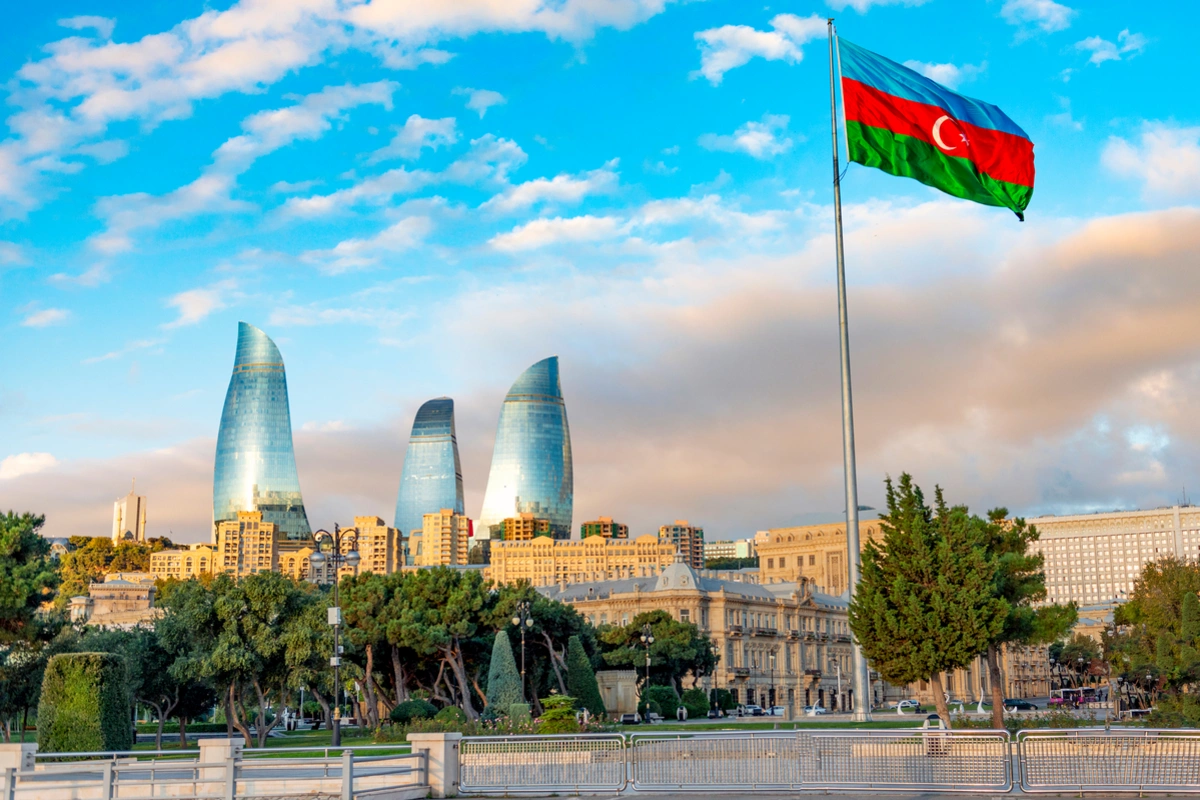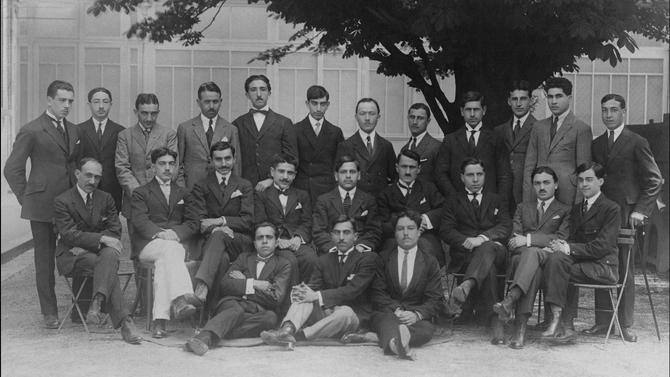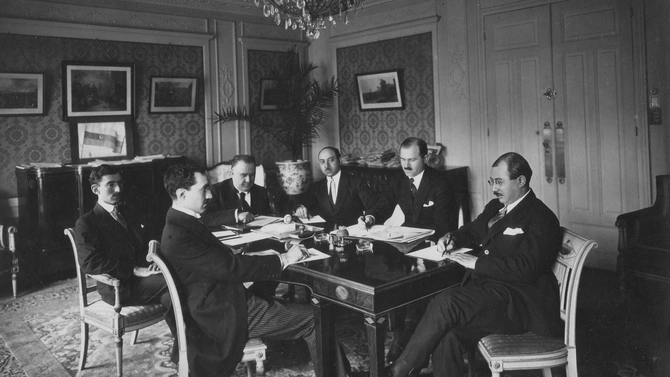
Azerbaijan's "Republic Day": the most powerfully symbolic date in the national calendar?
The flame towers are unmissable in the capital of Azerbaijan, especially at night. Here they are lit with the colors of the national flag. Image:saiko3p/Shutterstock
Officially, Azerbaijan celebrates its Independence Day (Müstəqillik Günü) on October 18. That’s the date in 1991 on which the ruling ‘Supreme Soviet’ formally accepted an act that would lead to Azerbaijan’s departure from the USSR. If you think that all sounds a bit clunky and bureaucratic, you wouldn’t be alone. While the date is marked with fireworks, somehow, for many locals, it feels a little arbitrary. After all, the country had already made a declaration of independence back in August 1991. Even after the October 18th law (whose more critical function was arguably to get rid of the foot-dragging communist party), complete independence at that stage was still dependent on formal ratification by a referendum. That wasn’t held until December 1991.
A date that’s far more resonant for many Azerbaijanis is, in fact, the 28th of May. Known as Republic Day (Respublika Günü), it’s often seen as the country’s ‘real’ national independence day, marking the 1918 start of Azerbaijan’s brief but highly significant first period as a nation-state: the Azerbaijan Democratic Republic (ADR). As an informal gauge of the date’s importance, there’s no easier test than to look at a map of Baku. The Azerbaijani capital has two main metro lines intersecting beneath the city’s railway terminus at a metro station named – yes, you guessed it – 28th May. Curiously, had you alighted here in the Soviet era, you’d have found it named 28th April. That commemorates the 28th of April, 1920, the date on which the Soviet Russian ‘Red’ Army had marched into Baku, crushing the ADR. The republic had lasted less than two years yet, and nearly 50 years later, when the Baku metro was constructed, it’s telling that the USSR still considered the date of the ADR’s demise to be significant enough to name the route’s most important station.

The 28th of May 2021 will be widely framed as Azerbaijan’s 103rd Republic Day. In reality, it’ll only be the 30th time that the date has been celebrated by an independent Azerbaijan.
As the 28th of May rolls around, journalists are likely to trot out potted histories featuring tried and trusted images of the Azerbaijan Democratic Republic as a beacon of secular European ideals in a region previously seen by Orientalists as ‘backward.’ You might read of the ADR’s commitment to equality of rights for all citizens, regardless of race or religion, its status as the first democracy of the Islamic world, or that female suffrage was more advanced here than in the UK and most of the world at the same time.

In reality, it’s hard to be sure how many of these idealistic goals would have been put into practice had the ADR not been crushed so quickly. Time was so short that there were never any elections to put the democratic spirit to the test. However, as a national narrative, the genuine pride that Azerbaijanis feel towards the ADR’s forward-thinking policies undoubtedly underpins many attitudes to this day. Meanwhile, from a historical perspective, one can hardly criticize the ADR’s leaders for inactivity. Survival of the state was a battle in itself and, indeed, one of the most important ways in which 28th May is symbolic is the fact that the Azerbaijan Democratic Republic managed to exist at all in what was a period of truly extraordinary geopolitical turmoil.
The background to the ADR’s creation is so complex that you’d need a library of books to make full sense of it[1]. With World War 1 raging after 1914, the Russian and Ottoman empires slogged it out in a series of campaigns in Eastern Anatolia (the eastern part of today’s Turkey), resulting in appalling suffering for the various peoples of the region. However, in 1917, two revolutions in Russia changed everything. Many Russian soldiers simply gave up and went home. Russia’s new Bolshevik regime effectively withdrew from the war altogether, allowing Lenin to concentrate his efforts on consolidating power for his shaky new Soviet regime. This gave the Ottoman army a chance to push east again, recapturing large areas of previously lost territories as they raced towards the Caucasus.
For over a century, the South Caucasus had been a viceroyalty of Imperial Russia. However, after the 1917 revolutions, the Georgians, Azerbaijanis and Armenians were essentially left to sort out their own affairs. On April 22, 1918, the region collectively declared itself independent as the short-lived Transcaucasian Democratic Federative Republic (TDFR) directed from Tbilisi. This move was a last-ditch attempt to gain some bargaining power against the continuing Ottoman advance: by this stage, Turkish troops had already re-conquered Batumi, the main oil Caucasian port on the Black Sea.
Meanwhile, other powers were also keen on grabbing parts of the Caucasus, particularly Baku, which was then one of the world’s most important suppliers of crude oil. Baku was at this stage out of the control of the TDFR, ruled by a group of Bolshevik commissars loyal to Lenin. Both Germany (ostensibly an ally of the Ottomans) and its enemy Britain hoped to find ways to secure the oil wells for themselves. Fearing that the Ottoman advance into the Caucasus was unstoppable without assistance, the leading Georgian faction decided to withdraw from the TDFR barely a month after its creation, declaring Georgian independence on May 26, 1918, and calling for help from Germany as a way to persuade the Ottomans to sign a peace deal. This left Armenians and Azerbaijanis as co-members of the decapitated TDFR with completely divergent goals. Azerbaijanis generally saw the prospect of Ottoman help as a good option in securing the liberation of Baku from its pro-Russian leaders. Thus just two days after Georgia, Azerbaijan itself declared its independence on May 28, 1918.
With Baku yet to be liberated, the first parliament met at a mansion in Yelizavetpol (now Ganja), a building that today houses the Agricultural Institute. Working with the Ottoman Turks, Azerbaijanis formed the ‘Army of Islam’ to reclaim Baku and the surrounding areas from Bolshevik control. The city’s pro-Russian ‘defence’ was later backed up by the intervention of the doomed British Dunsterforce mission in an almost comic-book series of adventures. However, the city was eventually taken by the Turkish and Azerbaijani troops in September 2018.

With the country united for the first time, the Azerbaijan Democratic Republic sent a delegation to the post-WWI 1919 Paris Peace Conference. It was there, on the 28th of May 1919, that the Azerbaijani delegates met with US President Woodrow Wilson while commemorating the country’s first anniversary. Wilson was later widely quoted to have praised the Azerbaijanis who he said “talked the same language that I did in respect of ideas, in respect of conceptions of liberty, in respect of conceptions of right and justice.” The Paris conference led to the Treaty of Versailles and – eventually – to Azerbaijan’s recognition by the major powers on 12th January 1920: a key national landmark. Sadly, as we have seen, the ADR would have very little peacetime during which to achieve lasting changes. Yet, in the few months it had available, it did set in train the basic legal and educational foundations for a democratic state.
The very fact that Azerbaijan survived is crucial and is what makes the 28th of May so important. It marks the tangible start of Azerbaijan’s self-perception as a secular, modern nation-state. A state straddling east and west with European outlooks overlaid on Eurasian traditions and a reframed consciousness of what it means to be Azerbaijani.
[1] Michael Reynold's book Shattering Empires is a good starting point.
Share on social media
Azerbaijan's "Republic Day": the most powerfully symbolic date in the national calendar?